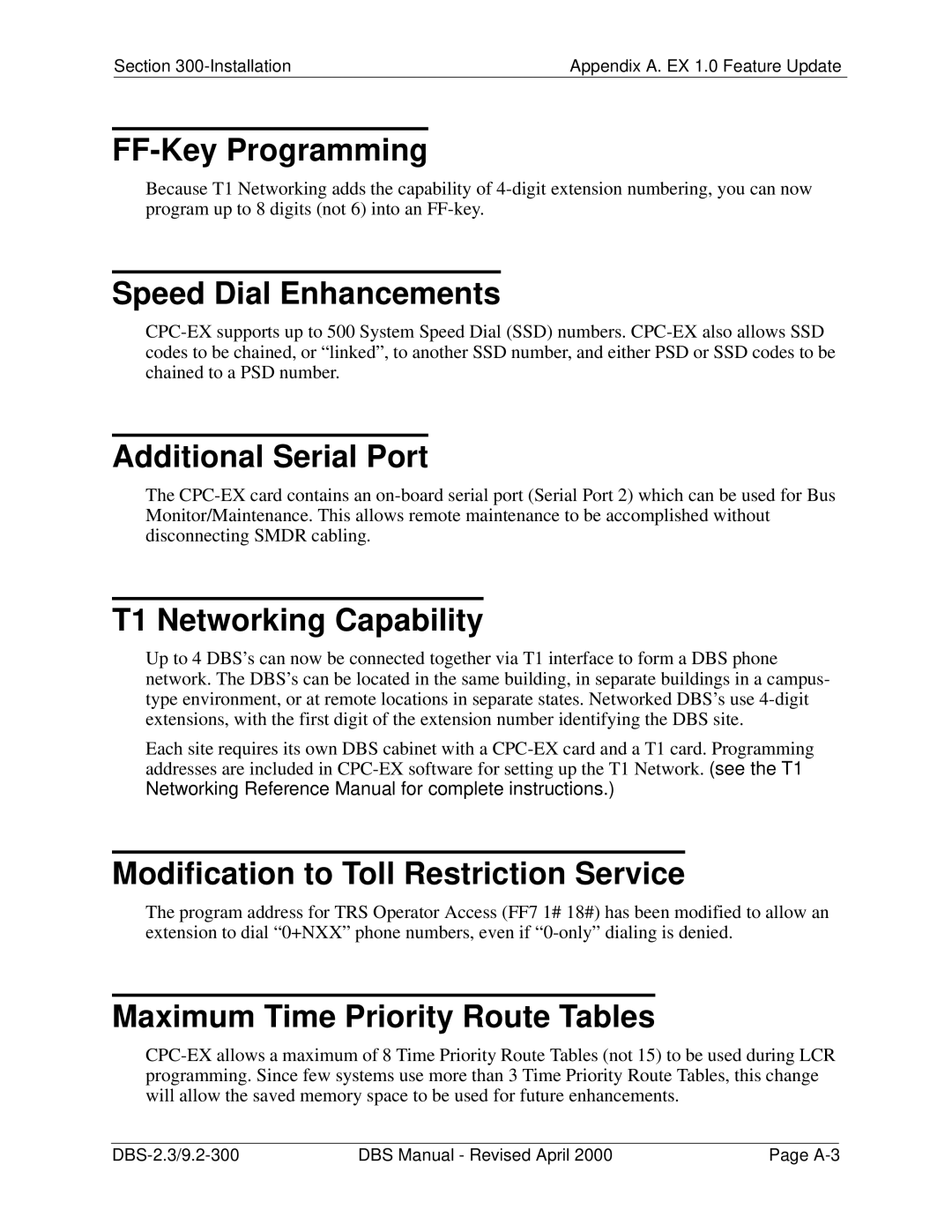
Section 300-Installation | Appendix A. EX 1.0 Feature Update |
| |
FF-Key Programming
Because T1 Networking adds the capability of 4-digit extension numbering, you can now program up to 8 digits (not 6) into an FF-key.
Speed Dial Enhancements
CPC-EX supports up to 500 System Speed Dial (SSD) numbers. CPC-EX also allows SSD codes to be chained, or “linked”, to another SSD number, and either PSD or SSD codes to be chained to a PSD number.
Additional Serial Port
The CPC-EX card contains an on-board serial port (Serial Port 2) which can be used for Bus Monitor/Maintenance. This allows remote maintenance to be accomplished without disconnecting SMDR cabling.
T1 Networking Capability
Up to 4 DBS’s can now be connected together via T1 interface to form a DBS phone network. The DBS’s can be located in the same building, in separate buildings in a campus- type environment, or at remote locations in separate states. Networked DBS’s use 4-digit extensions, with the first digit of the extension number identifying the DBS site.
Each site requires its own DBS cabinet with a CPC-EX card and a T1 card. Programming addresses are included in CPC-EX software for setting up the T1 Network. (see the T1 Networking Reference Manual for complete instructions.)
Modification to Toll Restriction Service
The program address for TRS Operator Access (FF7 1# 18#) has been modified to allow an extension to dial “0+NXX” phone numbers, even if “0-only” dialing is denied.
Maximum Time Priority Route Tables
CPC-EX allows a maximum of 8 Time Priority Route Tables (not 15) to be used during LCR programming. Since few systems use more than 3 Time Priority Route Tables, this change will allow the saved memory space to be used for future enhancements.
DBS-2.3/9.2-300 | DBS Manual - Revised April 2000 | Page A-3 |

